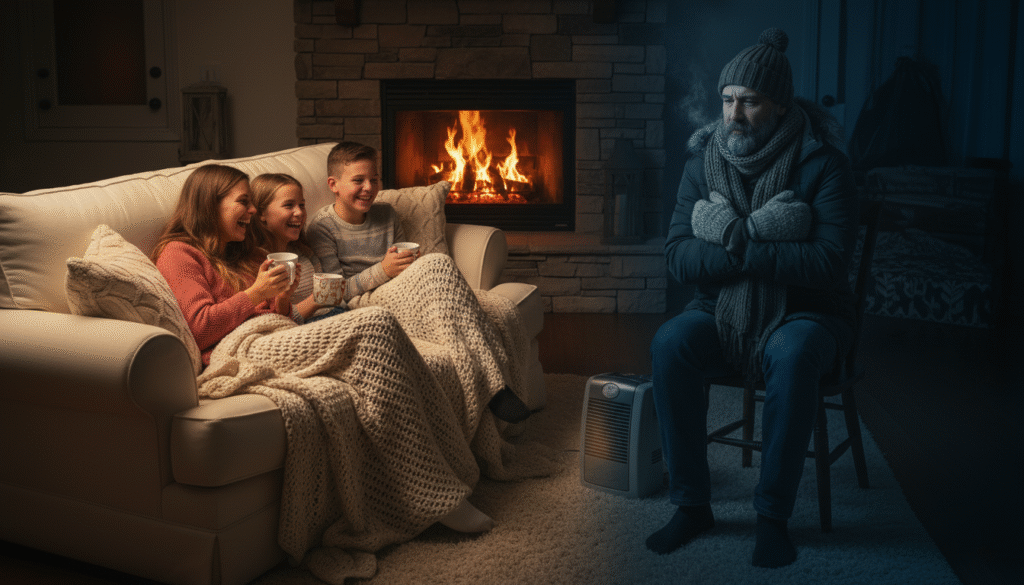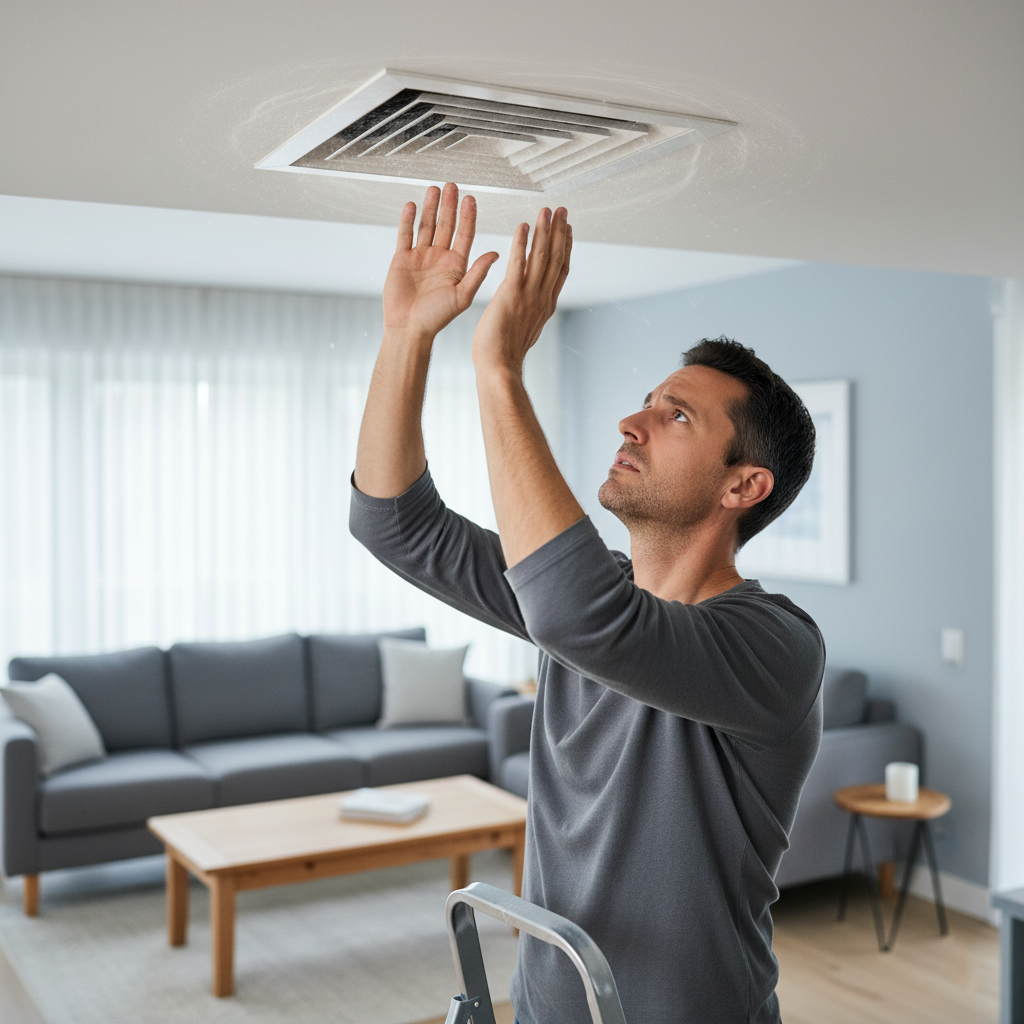How to Eliminate Cold Spots in Your Charlotte Home This Winter
South End Plumbing Heating & Air Expert Tips

How to Eliminate Cold Spots in Your Charlotte Home This Winter
As winter settles into Charlotte, you expect your home to stay evenly warm — but sometimes, that’s not the case. You may notice one bedroom that’s always chilly, or a corner of the living room that never quite reaches a comfortable temperature. These cold spots are more than just an annoyance; they can indicate underlying issues with your HVAC system, ductwork, or insulation.
At South End Plumbing Heating & Air, we help Charlotte homeowners identify and eliminate cold spots every winter. This guide explains why cold spots occur, how to fix them effectively, and when to call a professional. We’ve also included a quick-reference table to help you troubleshoot the most common causes.
What Causes Cold Spots in Your Home?
Cold spots occur when certain areas of your home don’t receive adequate airflow or heat. In Charlotte’s mild but unpredictable winter climate, several factors can contribute to uneven heating:
- Poor duct design or air leaks
- Clogged air filters restricting airflow
- Faulty dampers or closed vents
- Thermostat placement issues
- Insufficient insulation in walls, attics, or floors
- Leaky windows and exterior doors
Sometimes, it’s not just one cause — it’s a combination of small issues adding up to noticeable temperature differences from room to room.
Common Causes and Fixes for Cold Spots
Here’s a simple breakdown of what might be causing uneven temperatures in your Charlotte home and what you can do about it:
| Problem | Likely Cause | DIY Fixes | When to Call South End Plumbing Heating & Air |
|---|---|---|---|
| Blocked Air Vents | Furniture, rugs, or curtains blocking airflow | Clear obstructions, open vents fully | If airflow remains weak after vents are cleared |
| Dirty Air Filter | Restricted airflow from dust and debris | Replace filter (every 1–3 months) | If problem persists after filter change |
| Leaky Ductwork | Warm air escaping before reaching vents | Seal minor leaks with HVAC tape if accessible | For full duct inspection and sealing |
| Uneven Insulation | Cold air entering through poorly insulated areas | Add insulation or weatherstripping | For attic, wall, or crawl space insulation upgrades |
| Thermostat Issues | Poor placement or faulty sensors | Relocate or recalibrate thermostat | For professional thermostat zoning or smart system setup |
| Imbalanced Airflow | Incorrect damper settings or system imbalance | Adjust manual dampers in ducts | For full system balancing or zoning evaluation |
Step 1: Check and Clean Air Vents

Start with the simplest fix. Walk through your home and check each air vent:
- Ensure they’re open and unobstructed.
- Remove any furniture, rugs, or drapes covering vents.
- Vacuum vent covers to remove dust and debris buildup.
Even partially blocked vents can drastically reduce airflow, creating cold pockets in certain areas of your home.
Step 2: Replace or Clean Your Air Filter
A dirty air filter restricts airflow, making it harder for your furnace or heat pump to distribute warm air evenly.
For Charlotte homeowners, where dust and pollen can accumulate quickly, filters should typically be replaced every 1–3 months. Use high-quality filters rated for your specific HVAC system to maintain efficiency and airflow.
Step 3: Inspect Your Ductwork
Leaky ducts are a major cause of uneven heating. As heated air travels through the ducts, small gaps or disconnected joints can let it escape before reaching certain rooms.
To test for this, turn on your heating system and feel for warm air escaping from duct joints in accessible areas like basements or crawl spaces. If you find leaks, you can temporarily seal them with HVAC foil tape — but for long-term results, it’s best to have your ductwork professionally inspected and sealed by South End Plumbing Heating & Air.
Step 4: Evaluate Your Insulation
If certain rooms stay cold even with strong airflow, poor insulation may be the culprit. Attics, exterior walls, and crawl spaces are the most common problem areas in Charlotte homes.
Adding insulation helps retain warmth and improves overall energy efficiency. You can also add weatherstripping around doors and windows to prevent drafts, which can make rooms feel colder than they are.
Step 5: Check for Air Balancing and Zoning Issues
Sometimes your HVAC system needs to be balanced to distribute heat evenly throughout your home. This involves adjusting dampers inside your ductwork to regulate how much warm air flows into each zone.
If your home has multiple floors, the upper level often gets warmer than the lower level. A professional can balance the system to push more heat downstairs or install a zoning system that allows separate temperature control for different areas.
Step 6: Consider Thermostat Placement or Smart Zoning
If your thermostat is located in a hallway or near a drafty door, it may not accurately read your home’s overall temperature. That can lead to short cycling — where the system turns off before other rooms reach the desired warmth.
Installing a smart thermostat or a multi-zone system helps solve this by monitoring temperature in multiple rooms and adjusting airflow accordingly.
At South End Plumbing Heating & Air, we often recommend zoned HVAC systems for larger or multi-story Charlotte homes where temperature variations are most noticeable.
Step 7: Upgrade to a Variable-Speed or Modulating HVAC System
If your furnace or heat pump is over 10–15 years old, it may not be capable of maintaining even temperatures efficiently. Modern variable-speed systems adjust airflow and heating output dynamically, maintaining consistent warmth throughout your home.
They also run quieter, use less energy, and help prevent cold spots by operating continuously at lower speeds rather than in on/off bursts.
When to Call a Professional
If you’ve checked filters, vents, and thermostat settings but still have cold spots, it’s time to bring in the experts. A licensed HVAC technician can:
- Perform duct pressure testing to detect hidden leaks
- Inspect blower motors, dampers, and fan speed settings
- Evaluate insulation and airflow distribution
- Recommend zoning or system upgrades tailored to your home
Our experienced team at South End Plumbing Heating & Air specializes in diagnosing comfort issues unique to Charlotte’s homes and climate.
Prevent Cold Spots Before They Return
Keeping your home evenly heated is an ongoing process. Follow these maintenance tips to prevent cold spots all winter long:
- Schedule annual HVAC maintenance before the coldest months.
- Change filters regularly.
- Keep vents and returns clear.
- Seal windows and doors every fall.
- Have your ducts inspected every 2–3 years.
These simple steps improve comfort, reduce energy costs, and extend the life of your HVAC system.
Stay Comfortable This Winter with South End Plumbing Heating & Air
Eliminating cold spots isn’t just about comfort — it’s about efficiency, system performance, and the health of your home. Whether you need duct sealing, air balancing, or a complete system upgrade, South End Plumbing Heating & Air provides trusted, expert HVAC service throughout Charlotte, NC, and surrounding areas.
Call us today at (704) 741-8714 to schedule your free estimate or winter HVAC tune-up. Our family-owned team is here to make sure every corner of your home stays warm and cozy this winter.



